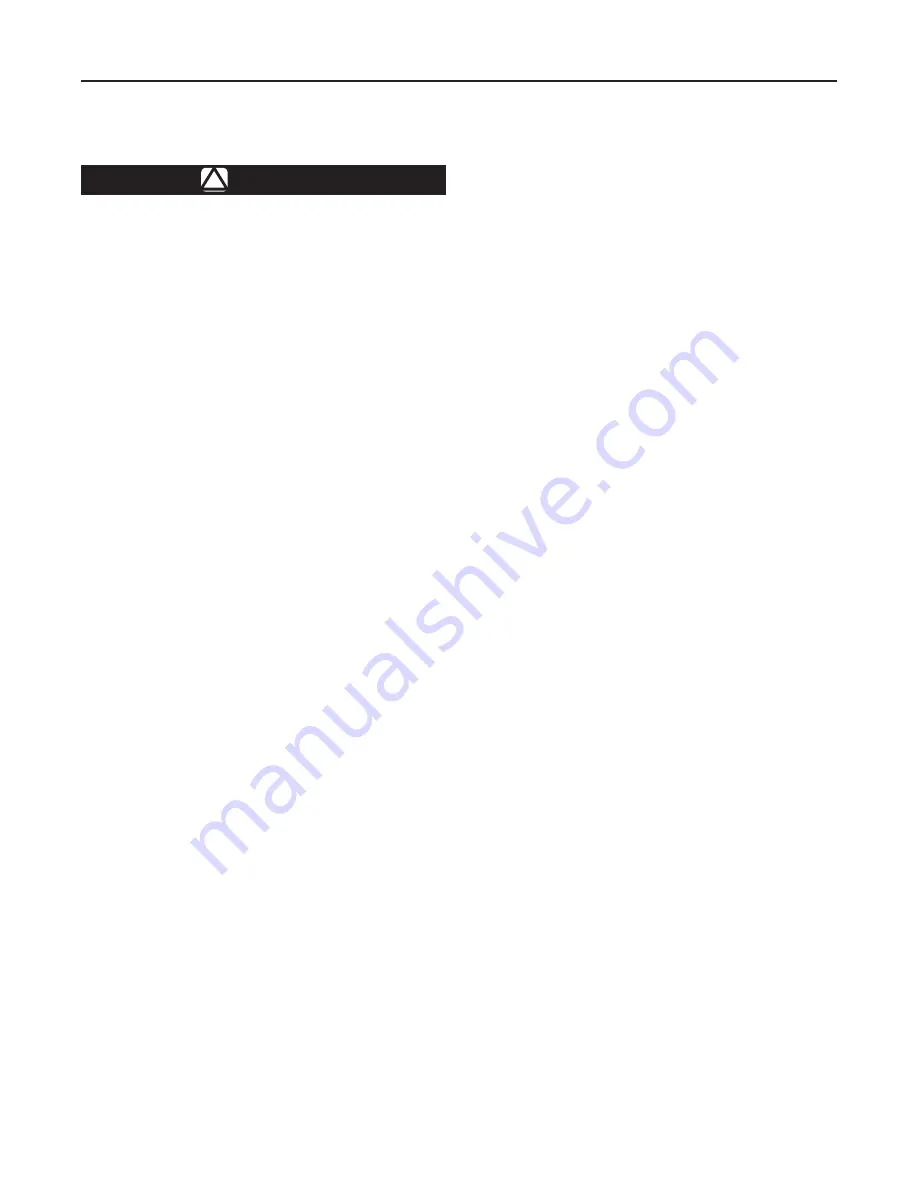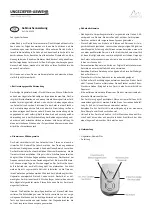
Types C471, C477 and C486
10
To Replace Packing or Install
Gland Hardware
!
WARNING
Downstream pressure must be released
before removing the screws holding
the gland assembly to the internal valve
body. Failure to do so could result in
personal injury.
1. The packing (keys 15F, G and H) can be replaced
with product in the tank by closing the operating
lever (key 18) and blowing down the downstream
pressure in the system.
2. If using Screw-Type hardware, remove the three
cap screws (key 17) holding the bonnet assembly
to the body. If using the current Stud-Type
hardware, remove the nuts (key 59) and washers
(key 55) holding the bonnet assembly to the body.
Note
If working on a valve equipped with
a pneumatic actuator, please refer to
the corresponding actuator Instruction
Manual for proper removal procedures.
3. Rotate the entire bonnet assembly slightly to
remove it from the body.
4. Unscrew the cap screw (key 15R) from the stub
shaft (key 15J) and remove the operating lever by
taking out the cotter pin (key 19).
5. Unscrew the retaining nut (key 15M) from the
bonnet. Pushing on the stub shaft (key 15J)
will expose the bonnet parts including the packing.
6. Besides the packing, the liner bushings (keys 15B
and 15K) should be replaced. Lubricate the
packings with Multi-purpose PTFE lubricant.
7. Reassemble in reverse order. Replace cap
screw (key 15R) using 30 to 35 in-lbs / 3.4 to
4.0 N•m torque.
8. Before replacing the gland assembly, replace the
O-ring (key 16) with the proper material matching
the main seals. The standard Types C471 and
C477 material is Nitrile (NBR).
9. Orient Cam and stub shaft (See Figure 6)
Before reassembling the gland assembly into the
body, make sure the operating lever can move freely
with the new parts installed. Then, correctly orient the
cam to the stub shaft. Incorrect orientation will result
in either:
a. Not being able to open the internal valve or
b. Only being able to partially open the internal
valve which will cause the valve’s excess flow
feature to close prematurely
Refer to Figure 6. Looking at the end of the stub
shaft (C) that the lever or actuator attaches to:
a.
The cam profile on the opposite end of the shaft
should be up and the cam pointing to the left.
b. The hole (B) through the stub shaft that the lever/
actuator attaches to should be oriented in a NE to
SW position with N being at the top.
c. The 2 gland wings should be at the top as shown
in Figure 6.
d. The lever should be oriented as shown and the
cotter pin run through hole (B).
10.
Once proper orientation of the cam is confirmed:
a. Reinstall the washers (key 55) and nuts (key 59)
and torque to 90 to 100 in-lbs / 10 to 11 N•m.
Reinstall actuator or latch if applicable.
b. If reusing the cap screws, reinstall the actuator
or latch if applicable before installing the cap
screws and washers. Torque to 90 to 100 in-lbs /
10 to 11 N•m.
c. If installing new studs, install the long studs
(key 57) in the top-most hole locations and the
short stud (key 58) in the bottom-most location.
Secure the gland to the body with the first set of
washers (key 12) and nuts. Reinstall actuator or
latch if applicable or cover two long studs with
protective cap (key 60) if available.
To Replace Seat Discs
1. Remove the valve from the tank.
2. Remove the cotter pin (key 14, Figure 7) and
unscrew the hex nut (key 13).
3. Remove both disc holders (keys 6 and 12) from
the stem (key 2).
4. Unscrew the screws (keys 9 and 4 for 2 in. /
DN 50, 6 for 3 in. / DN 80) holding the disc retainer
(key 8) to replace the main seat disc.
5. Examine both seat discs (keys 7 and 11) and
replace if necessary.
6.
If the excess flow spring (key 3) is changed,
replace the nameplate or stamp the body with the
new type number.


































